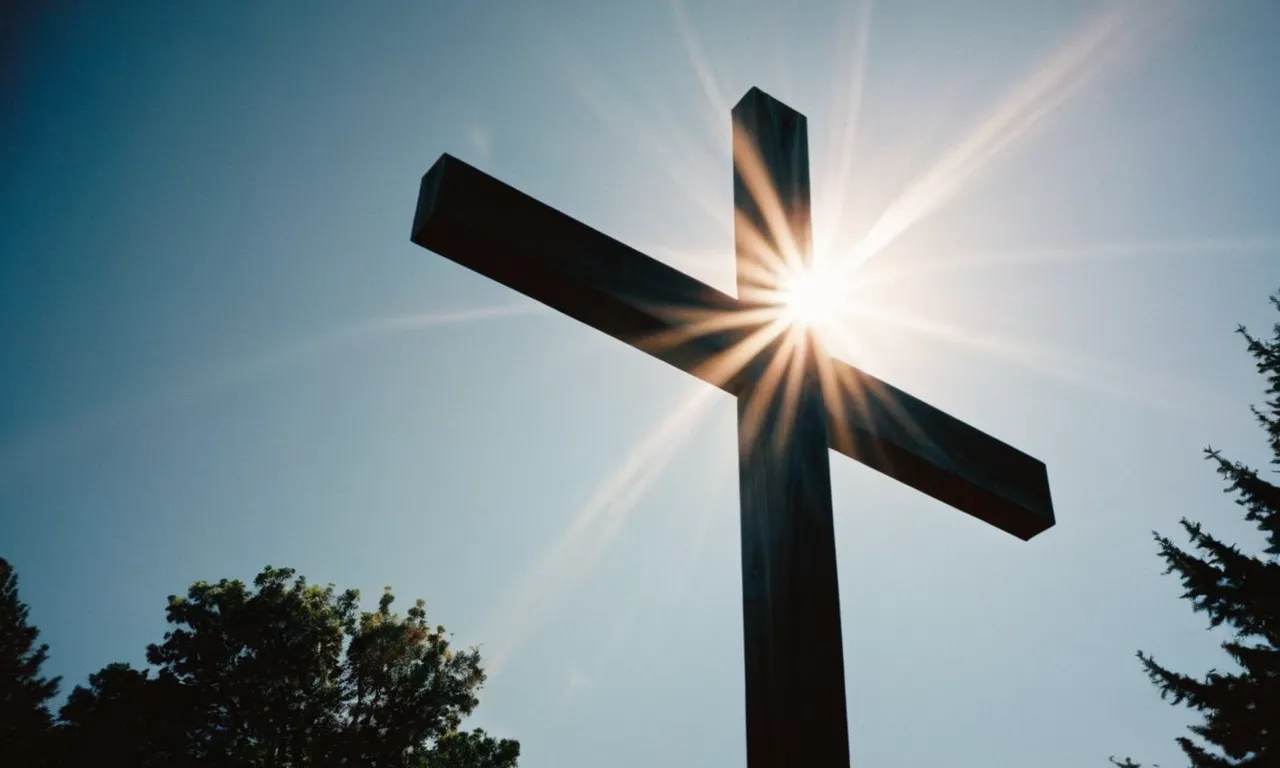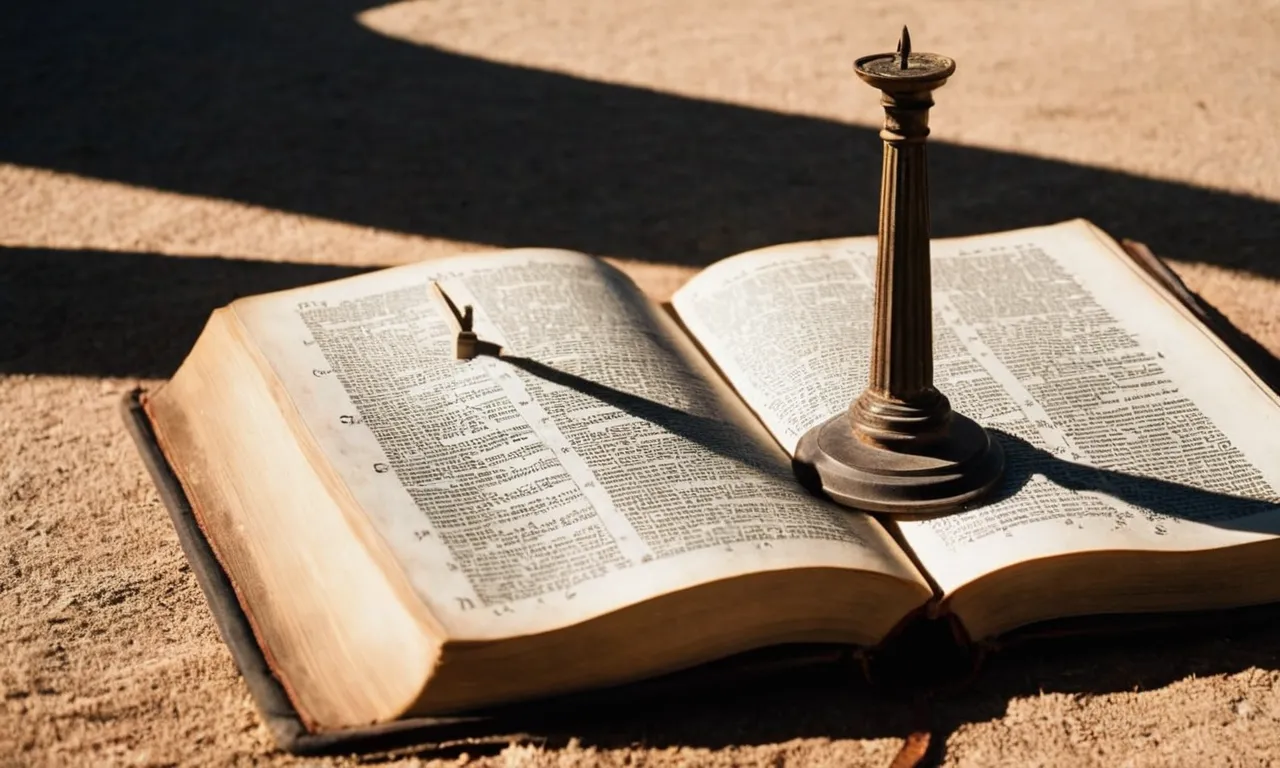What Is The Sixth Hour In The Bible?
The sixth hour is mentioned several times in the Bible, particularly in the New Testament. This hour has great significance in the events surrounding Jesus’ crucifixion and death.
If you’re short on time, here’s a quick answer to your question: The sixth hour refers to noon, according to the Jewish method of counting hours from sunrise. It marks a pivotal moment in the crucifixion narrative.
In this comprehensive guide, we will examine the meaning of the sixth hour in depth. We’ll look at the biblical and historical context, analyze key sixth-hour passages, and explain the theological significance of this fateful hour in Jesus’ final days.
Defining the Sixth Hour in the Bible
The Jewish System of Telling Time
In ancient Jewish society, the day was divided into 12 equal hours starting at sunrise. As sunrise and sunset shifted throughout the year, so did the length of an “hour.” The sixth hour was always calculated as halfway between sunrise and sunset.
Since sundials were one of the main timekeeping devices, the sixth hour corresponded to when the sun was straight overhead at midday. This was around 12 PM in modern time.
The sixth hour was an important division of the day. It marked when the day was half over and signaled a time for prayer and rest from labor.
Knowing the ancient reckoning of time helps provide context for biblical references to the sixth hour.
Important Sixth Hour Passages in the Gospels
There are several significant biblical events associated with the sixth hour:
- Jesus was crucified at the sixth hour (Matthew 27:45, Mark 15:33, Luke 23:44)
- Darkness covered the land from the sixth to the ninth hour when Jesus died (Matthew 27:45, Mark 15:33, Luke 23:44)
- Peter had a vision of clean and unclean animals at the sixth hour (Acts 10:9)
- Jesus met the Samaritan woman at Jacob’s well at the sixth hour (John 4:6)
In each case, the sixth hour refers to 12 PM, halfway between sunrise and sunset. This was often a time of spiritual significance and encounter with God.
Knowing the ancient reckoning of time provides crucial context for properly understanding these pivotal biblical events. Paying attention to the sixth hour mentions deepens our insight into the biblical narrative.
The Crucifixion Darkness at the Sixth Hour
Darkness Covers the Land
According to the Gospels, at the sixth hour (around noon) on the day of Jesus’s crucifixion, darkness fell over the whole land for three hours (Matthew 27:45; Mark 15:33; Luke 23:44). This supernatural darkness was viewed by early Christian writers as a sign of God’s judgment on the sinful world.
Modern scholars have debated whether this darkness actually occurred or was intended metaphorically. However, extra-biblical sources also report unusual darkness around this time.
The early historian Thallus recorded a solar eclipse dated to 29-32 AD, which “could provide independent confirmation of the gospel accounts of the darkness at the time of Jesus’ crucifixion.”
Supernatural or Natural Phenomenon?
Those open to miracles see the crucifixion darkness as a dramatic sign from God, similar to the plague of darkness in Egypt (Exodus 10:21).
Some also note that a solar eclipse at Passover time would be impossible, since Passover occurs during a full moon.
However, discoveries of altered calendars have questioned whether references to Passover in the Gospels reflect the actual calendar Jesus followed, so a solar eclipse remains possible.
In the end, whether natural or supernatural, the darkness highlights Christ’s sacrificial death for the world’s sins. As one hymn declares, “In the cross, in the cross, be my glory ever; Till my raptured soul shall find Rest beyond the river.”

Other Significant Sixth Hour Events
Jesus Sentenced by Pilate
According to the Gospels, Jesus was brought before Pontius Pilate, the Roman governor of Judea, in the early morning hours of the day of his crucifixion (John 18:28).
After questioning Jesus and finding no reason to condemn Him, Pilate offered to release Jesus as it was customary during the Passover feast to pardon one prisoner.
However, the crowd called for the release of Barabbas instead. At around the sixth hour (noon), Pilate handed Jesus over to be crucified (John 19:14-16). This fateful decision followed a long struggle by Pilate trying to release Jesus.
Peter’s Vision of the Sheet
In Acts 10, Peter had a vision while praying on a roof around noon. He saw a large sheet being lowered from heaven containing all kinds of animals.
A voice told him to “kill and eat”. Since some of the animals were unclean under Jewish law, Peter objected.
The voice said “Do not call anything impure that God has made clean” (Acts 10:15). This vision prepared Peter to preach the Gospel to the Gentile Cornelius, showing that salvation in Jesus was for all people, not only Jews.
Healing of the Lame Man at the Temple
In Acts 3, Peter and John encountered a man lame from birth while going to the temple to pray around 3 pm (the ninth hour).
In the name of Jesus, Peter commanded the man to walk and immediately he was healed. The man entered the temple courts “walking and jumping, and praising God” (Acts 3:8).
This miracle astonished all the people at the temple. Peter used it as an opportunity to preach the Gospel, highlighting Jesus’ death and resurrection. About 5,000 people believed in Jesus that day (Acts 4:4).
Theological Meaning and Symbolism
Jesus as the Passover Lamb
In the Bible, the sixth hour has profound theological meaning and symbolism, especially in relation to Jesus’s crucifixion.
According to the Gospels, Jesus was crucified at the sixth hour (Matthew 27:45; Mark 15:33; Luke 23:44). This connects his death to the Jewish Passover sacrifice.
In the Old Testament, the Passover lamb was slaughtered in the evening (Exodus 12:6). This event prefigured Jesus’s sacrifice as the Lamb of God (John 1:29).
As the fullest expression of Christ’s passion, his death occurred at the very hour that, hundreds of years earlier, the Passover lambs were slain on the same day.
The theological meaning is clear: Jesus is the ultimate Passover Lamb, sacrificing himself to liberate humanity from slavery to sin. His death atones for the sins of the world (1 John 2:2). The sixth hour underscores that Jesus’s crucifixion was the fulfillment of what the Old Testament Passover ritual profoundly symbolized.
Jesus as the Light of the World
Paradoxically, while the crucifixion marks the darkest moment in history, it also represents Jesus’s shining triumph as the light of the world.
When utter darkness covered the land for three hours (Luke 23:44-45), it symbolized the spiritual darkness and death brought by sin (Genesis 1:2-3; John 8:12). Jesus defeated this darkness by taking God’s wrath for sin on himself as a sacrifice for all wayward people.
As true light shining in the darkness (John 1:5), his redemptive work reconciles sinners to a holy, loving God (2 Corinthians 5:17-21).
So while the sixth hour marks Jesus’s suffering and death, it also represents the dawn of new life and possibility for all who place their faith in him (John 20:1).
Both as the fulfillment of the Passover lamb and the cosmic victory of light over darkness, the theological meaning of the sixth hour is the focal point of Christ’s atoning work for the world.
Conclusion
The sixth hour marked a pivotal moment in biblical history. As Jesus hung on the cross, darkness fell over the land for three hours beginning at noon. This supernatural event coincided with his sacrificial death, bearing the sins of the world.
The sixth hour underscores Christ’s atoning work on the cross and rich theological meaning regarding salvation. Through studying the significance of the fateful sixth hour, we gain a deeper understanding of Christ’s love and the Gospel message.







